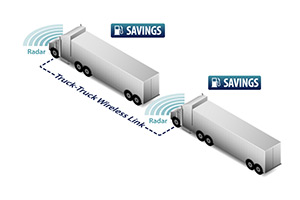Driver-Assistive Truck Platooning Boosts Fuel Economy, Report Says

A new report by Auburn University found that driver-assistive truck platooning can realize up to 10% fuel economy for the trailing truck and up to 5% fuel economy for the leading truck.
The study also determined that truckload and linehaul less-than-truckload operations likely would benefit the most from a platooning system, particularly among larger carriers. Fleets and drivers who operate average truck trips of more than 500 miles would experience the highest returns on investment from platooning.
“Regarding fuel economy, previous testing has shown that due to aerodynamic drafting effects, DATP has the potential to significantly reduce fuel use,” according to the report.
“In almost all cases, there is little interest in collaborating with competitors, but particularly within the private-fleet sector, the scale of noncompetitors is large. While other sectors and fleet sizes are potential target markets, the larger [over-the-road] fleets represent the early adopters that are needed to resolve key challenges and lower adoption prices through economies of scale,” the ATRI report said.
The report was spearheaded by Auburn University and sponsored by the U.S. Department of transportation. The American Transportation Research Institute was part of a team that produced the report.
An earlier version of this article identified the American Transportation Research Institute as the report’s author.

